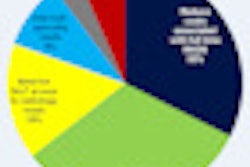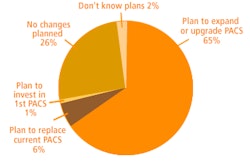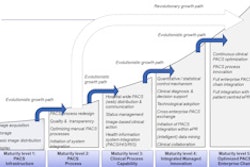Dear AuntMinnie Member,
What are Generation Y radiologists expecting from the modern imaging workplace? PACS for one thing, but not just any PACS -- recently minted radiologists will demand an array of reporting and communication tools to help them deal with increasing workloads.
So stated PACS pioneer Eliot Siegel, MD, of the University of Maryland in Baltimore, who spoke on the unique expectations of Generation Y radiologists at this week's Medical Imaging Informatics Symposium in New York City. Associate editor Cynthia E. Keen was on hand to report on the presentation for our PACS Digital Community.
Gen Y radiologists have grown up in the era of cell phones, texting, and the Internet, which have shaped their personalities. They are good at multitasking and are highly adaptable, but they can also be impatient, Dr. Siegel believes.
How does this affect PACS? These radiologists will expect to use increasingly sophisticated tools to improve productivity. They will probably also be the ones to figure out how to convert social media sites into vehicles for improved communication between radiologists and referring physicians.
Learn more by clicking here, or visit the community at pacs.auntminnie.com.
3T cardiac MRI
In other news, researchers from Canada have found that 3-tesla cardiac MRI can be used to produce 3D volumetric images of the heart that are useful for cardiac resynchronization therapy or coronary artery revascularization, according to a new article in our Advanced Visualization Digital Community.
The group used a technique that made use of MRI's unique ability to image scar tissue, which has been a shortcoming of anatomical-based cardiac imaging modalities such as CT angiography. By combining the cardiac MRI with a matched anatomical image of the coronary vasculature, interventionalists can get a better idea of how to target therapies such as stent placements. Learn more by clicking here.
Finally, learn about how Dutch researchers improved the performance of computer-aided detection (CAD) by analyzing images with multiple CAD algorithms in a single session, rather than just using a single application, as is the norm in clinical practice. That story is available by clicking here or visiting the community at av.auntminnie.com.



















